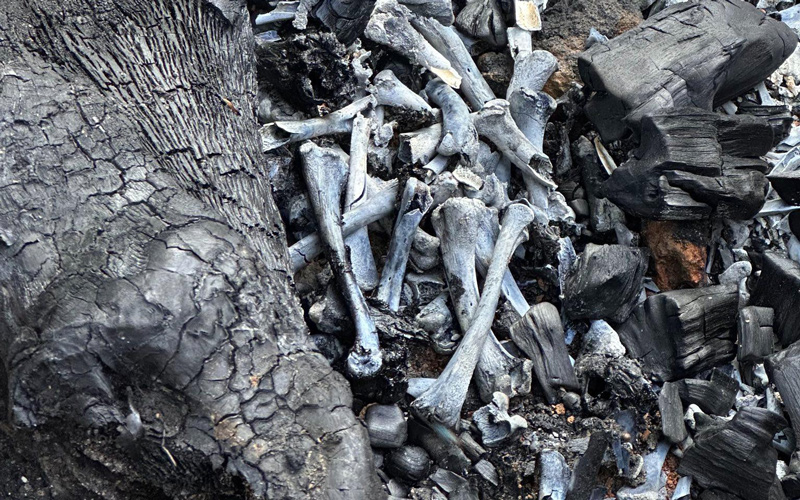Sam T shares a recent article on terra preta:
Mysterious patches of fertile black soil pepper the verdant Amazon rainforest. They sit in stark contrast with the reddish, eroded soil that dominates the basin. Researchers have long thought this Amazonian dark earth—or terra preta—was created by pre-Hispanic Indigenous civilizations, which have inhabited the region for millennia, but it wasn’t clear how. Now, a multidisciplinary team of scientists and Indigenous partners suggests the ancient Amazonians intentionally created the rich soil thousands of years ago to better foster their crops, and that their modern-day descendants are still making new terra preta today.
“This could change everything,” says Lucas Silva, an environmental scientist at the University of Oregon who was not involved in the new study. If the study holds up, he says, it would be the first demonstration of modern creation of dark earth that others can replicate. But he’s not convinced the process is as fast and simple as the new study suggests. “I don’t think we’re there yet.”
The Amazon’s terra preta is much darker—black or dark brown—more fertile, and holds much more organic carbon than most of the region’s soils. Crops grow better in it because of its high phosphorus, nitrogen, and calcium content. And because of its supercharged carbon content, scientists consider it an important carbon reservoir that sequesters greenhouse gases.
Terra preta is usually found near archaeological sites and contains charcoal, organic matter from food remains—such as fish and animal bones—and ancient artifacts such as pottery shards, hinting that ancient civilizations contributed to its formation. But Western researchers have debated whether they made it so on purpose or it occurred serendipitously from their practices. Some researchers, including Silva, have even suggested that nutrients were deposited naturally in dark earth thousands of years before human intervention.
To get to the bottom of its origin, Morgan Schmidt, an archaeologist and geographer at the Federal University of Santa Catarina, and his team focused on the soil of the Kuikuro Indigenous Territory, on the upper Xingu River in the southeastern Amazon of Brazil. There, scientists analyzed soil from four archaeological sites as well as two historic villages occupied from 1973 to 1983 and one modern village, Kuikuro II. Radiocarbon dates suggested the oldest sample is 5000 years old; most ranged from 300 to 1000 years old.
Researchers compared terra preta collected from mounds bordering the ancient and historic villages’ plazas and roads with soil collected at the periphery of these sites. They found that the soil from the residential areas contained more than double the organic carbon, and was less acidic by one pH unit, than the peripheral soil—making it much more fertile. The residential samples also had far denser concentrations of chemical elements associated with human intervention—such as phosphorus, potassium, and calcium—than those from the periphery. When Schmidt and colleagues analyzed soil from Kuikuro II, where hundreds of villagers live and grow cassava, corn, papaya, bananas, and other crops, they found a similar pattern: The soil from the residential center of the village was much more fertile than that from the outskirts, suggesting modern-day village practices continue to create dark earth, the researchers report today in Science Advances. The researchers calculated about 4500 tons of stored soil carbon at one archaeological site, whereas the modern village had 110 tons of carbon stored in middens.
We can make it too – I’m sure of it. Our experiments are ongoing.


1 comment
G’Day David, Belinda here from coastal tropical Queensland in Australia. I have been binge watching your videos since I ‘attended’ the Traditional Skills Summit hosted by STS. I have ordered a couple of your books and am waiting for them to be delivered. I have a couple of questions which I was hoping you could answer.
1. when burning in trenches to cover over and grow in, do you worry about the heat killing underground bacteria or worms etc? and
2. do you have an irrigation system in your grocery row or do you hand water?
I’m in the process of trying to establish a ‘food forest’ in my front yard (our house block is only 700 m2), which was all sand until we added a couple of tonne of wood chip and stump grindings from when we had palm trees cut down and chipped. Your videos have assisted me greatly and I am really thankful I found them. I am sorry that I am not able to pay for any subscriptions or membership to STS, I would love to be able to provide you with financial support, but can not.
With thanks
Comments are closed.